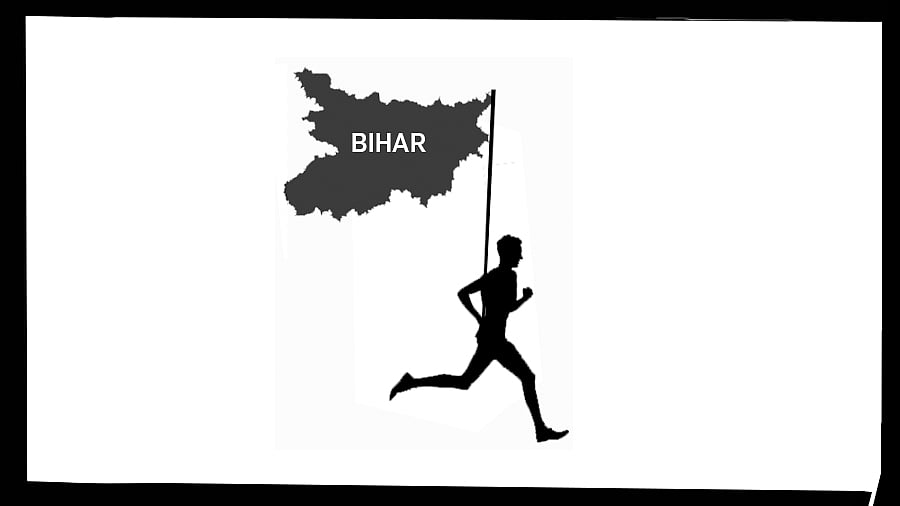
As the world’s population gradually ages, India’s demography has emerged as a subject of global interest and discourse. Much has been talked about the opportunity India has, because of its young population that can propel the country towards development. However, India’s ability to translate its demographic opportunity into a dividend also hinges on the prospects of Bihar. The state lies at the centre of India’s demographic challenge, with one of the youngest populations in the country, but plagued with poverty and illiteracy. Without meeting the needs of Bihar’s youth, India’s dream to reap the demographic dividend will be relegated to a mere statistical promise.
According to the 2011 population census, Bihar has about 105 million people with 89% of them residing in rural areas. The literacy rate of the state is quite lower than the country’s average, 61.8% against 72.98%. The male literacy rate is 71.2%, while the female literacy rate is only 51.5%. However, its greatest advantage is its youth population. Over 58% of the state’s population is aged under 25 years, with a median age of just 22. Bihar also has one of the highest total fertility rates in the country, with about three children per woman, which is relatively higher as most of the states have already slipped below the replacement level of fertility.
With an overwhelmingly young population, the state is poised to witness a surge in its working-age population in the coming years. If this young workforce is equipped with the necessary skills and the requisite education, Bihar could meet its internal labour demands and emerge as a major contributor to the national workforce. To harness this potential, the state must prioritise skill development and higher education, particularly in underserved areas. This will enhance the employability of the youth and reduce their dependence on informal and low-paying jobs. A skilled and mobile workforce can generate a steady flow of remittances, mirroring the success of the southern states where migration has contributed significantly to household incomes.
Every one in three persons in Bihar is multi-dimensionally poor, making it the state with the highest incidence of such poverty in the country. It ranks as the worst-performing state in five critical indicators of multidimensional poverty – nutrition, child and adolescent mortality, maternal health, the number of years of schooling, and sanitation. These deprivations not only reflect the state’s developmental lag but also severely constrain the capabilities of its youth. Coupled with these structural deficits is the persistent challenge of unemployment. According to the latest Periodic Labour Force Survey, Bihar’s unemployment rate for individuals aged 15 years and above stands at 3.9% – this is slightly higher than the national average of 3.2%. The situation is more acute among youth aged between 15 and 29 years, with an unemployment rate of 14%. Only 8.5% of Bihar’s workforce is engaged in salaried or regular wage employment, the lowest among all states.
A history of relegation
Between 2001 and 2011, more than seven lakh people migrated out of the state for employment. These figures reveal a depressing reality: despite its demographic promise, Bihar grapples with deep-rooted structural deficits that hinder upward mobility for its youth. Inadequate access to quality education and health, limited opportunities of formal employment, and persistent poverty constrain individual aspirations and suppress the state’s development. Bihar’s employment opportunities largely revolve around a single urban centre, Patna. This results in a disproportionate burden on one city that limits the state’s ability to use the potential of its youth effectively.
For decades, Bihar has carried the tag of a ‘BIMARU’ state. Now, it has a unique opportunity to finally overcome its reputation. This requires substantial investment in human capital, ensuring quality health, nutrition, and education for all. Policymakers and the government should prioritise improving the employment scenario of the state. Women’s employment opportunities need to be expanded to promote inclusive growth. Rural enterprises should be promoted to ensure that people do not need to migrate to urban centres in search of jobs. Lastly, to make these changes possible, institutions need to be strengthened to ensure better governance and accountability.
Since independence, Bihar’s story has largely been one of deprivation, neglect, and a series of missed opportunities. The state has grappled with poverty, illiteracy, discrimination, and political uncertainties. The dismal development scenario of the state has hurt not only the aspirations of its people but also the broader hopes of the nation. However, at present, it stands at a critical crossroads. It has a young population whose potential is largely untapped, which, if leveraged effectively, can become a key ingredient for its success. However, it should be kept in mind that Bihar’s demographic dividend is not automatic; it depends on wise policy choices. For it to succeed, policymakers need to act urgently on the existing disparities and deprivations within the population and the youth in particular. Only then can Bihar rewrite its growth trajectory and contribute meaningfully to the nation.
(Illias is a faculty at the Development Management Institute, Patna, and
Paramita is a doctoral fellow at the International Institute for Population Sciences, Mumbai)
Disclaimer: The views expressed above are the author's own. They do not necessarily reflect the views of DH.